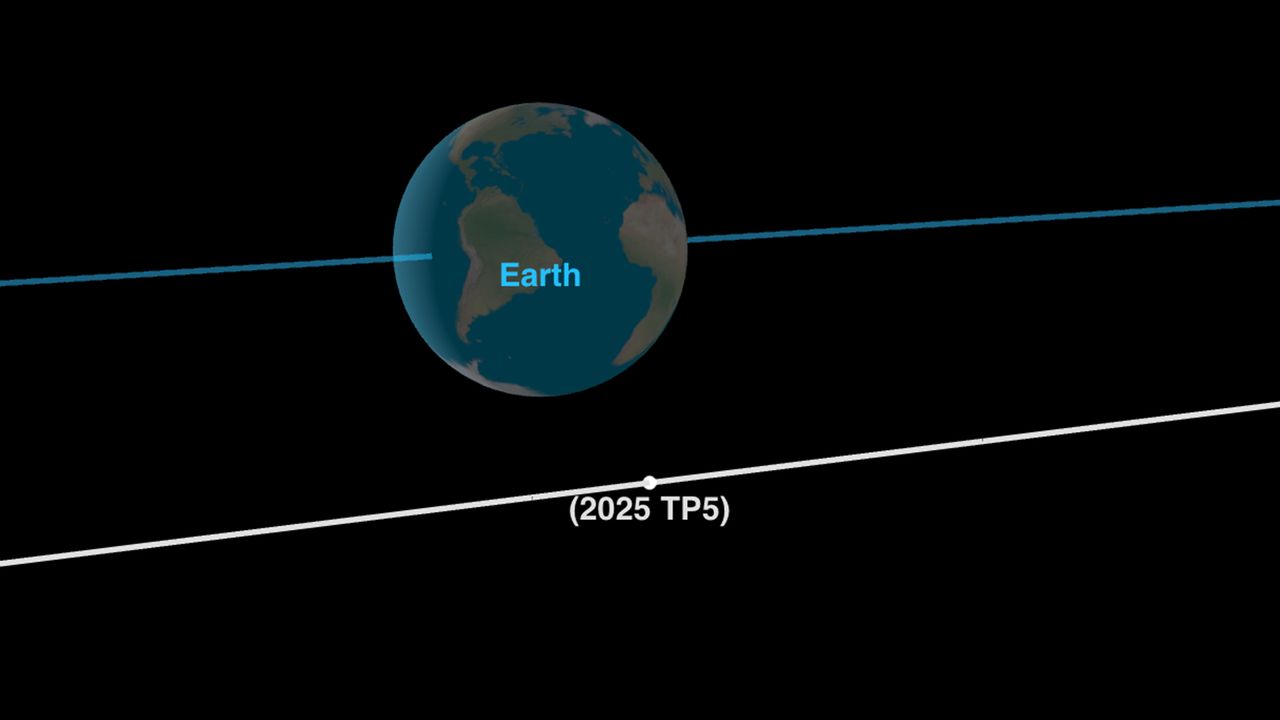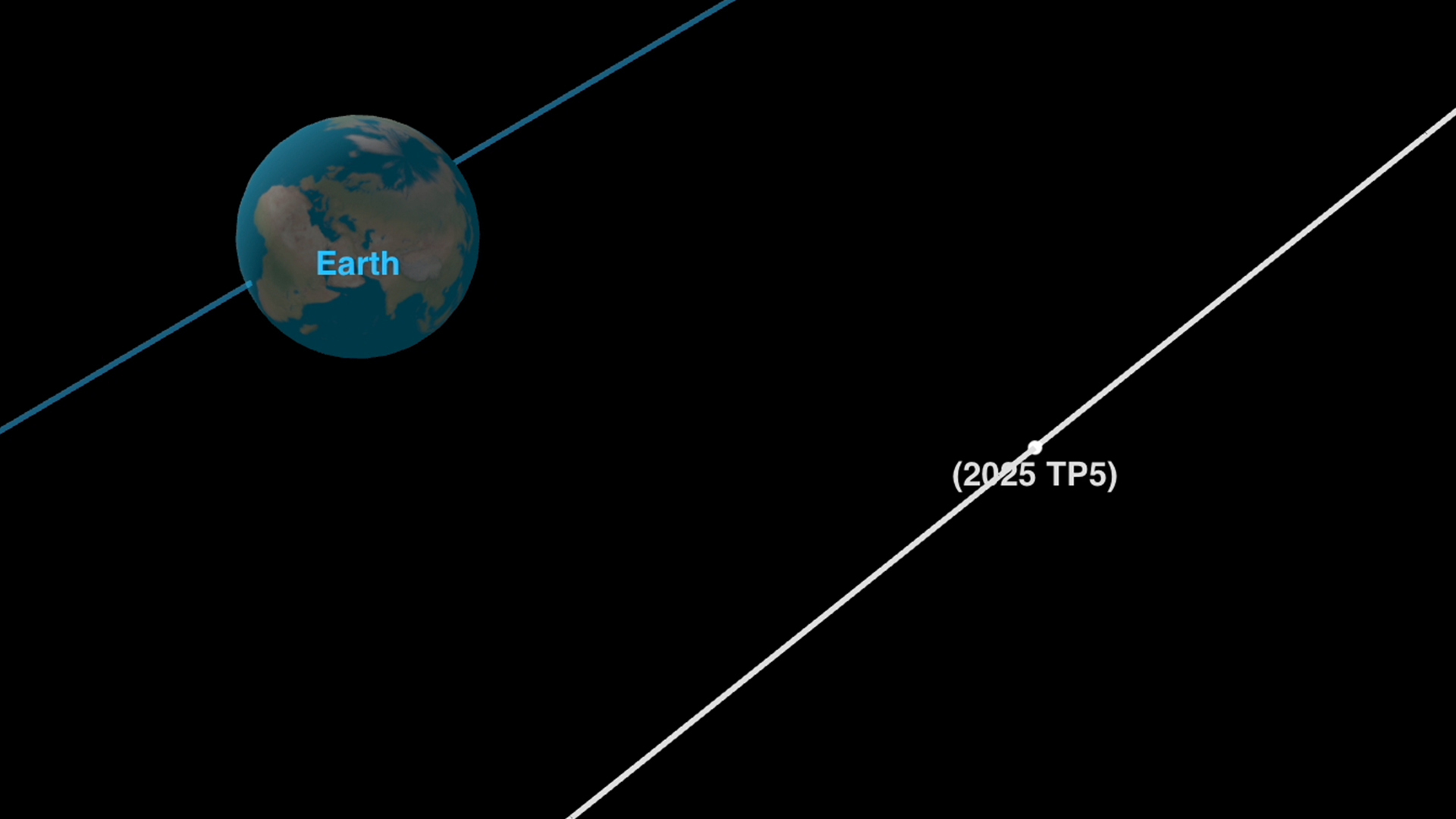
A newly discovered space rock zoomed safely by Earth on Wednesday (Oct. 15) at only about a quarter of the average distance to the moon.
The asteroid, called 2025 TP5, sailed by our planet at 4:09 p.m. EDT (2009 UTC) at a minimum distance of 60,328 miles (97,089 km), according to data from NASA's Jet Propulsion Laboratory. (NASA is in shutdown, like much of the U.S. government, but critical activities like seeking potentially hazardous asteroids can continue.) By comparison, the average distance to the moon is 238,855 miles (384,400 kilometers).
After passing by Earth, 2025 TP5 will make a close flyby of the moon on Thursday (Oct. 16), flying as close to the lunar surface as 74,616 miles (120,084 km), JPL stated. It's a moderately sized asteroid: with an estimated diameter of around 54 feet (16 meters), according to JPL, 2025 TP5 is about the same scale as the six-story Chelyabinsk meteor that broke up above Russia in 2013.
Despite 2025 TP5 coming relatively close to Earth in September 1979, astronomers only discovered the space rock Tuesday (Oct. 13) around 4:07 a.m. EDT (0807 UTC) using the Asteroid Terrestrial-impact Last Alert System (ATLAS), at a facility in Mauna Kea, Hawaii. Astronomers there were the first to post observations to a circular about 2025 TP5 shared by the Minor Planet Center, which is a branch of the International Astronomical Union that brings new discoveries to the community.

ATLAS is a four-telescope, early-warning system for asteroids developed by the University of Hawaii and funded by NASA, according to the ATLAS website. While its design is to seek potentially hazardous asteroids, this particular one was not a threat.
Astronomers have spent several decades cataloging asteroids of a threatening size that may be intersecting Earth, and have found no imminent threats to our planets after decades of searching. Indeed, the technology has improved so much that it’s common to find several small asteroids coming close to Earth every month, including one earlier this October that skimmed above us at the altitude of the International Space Station.







